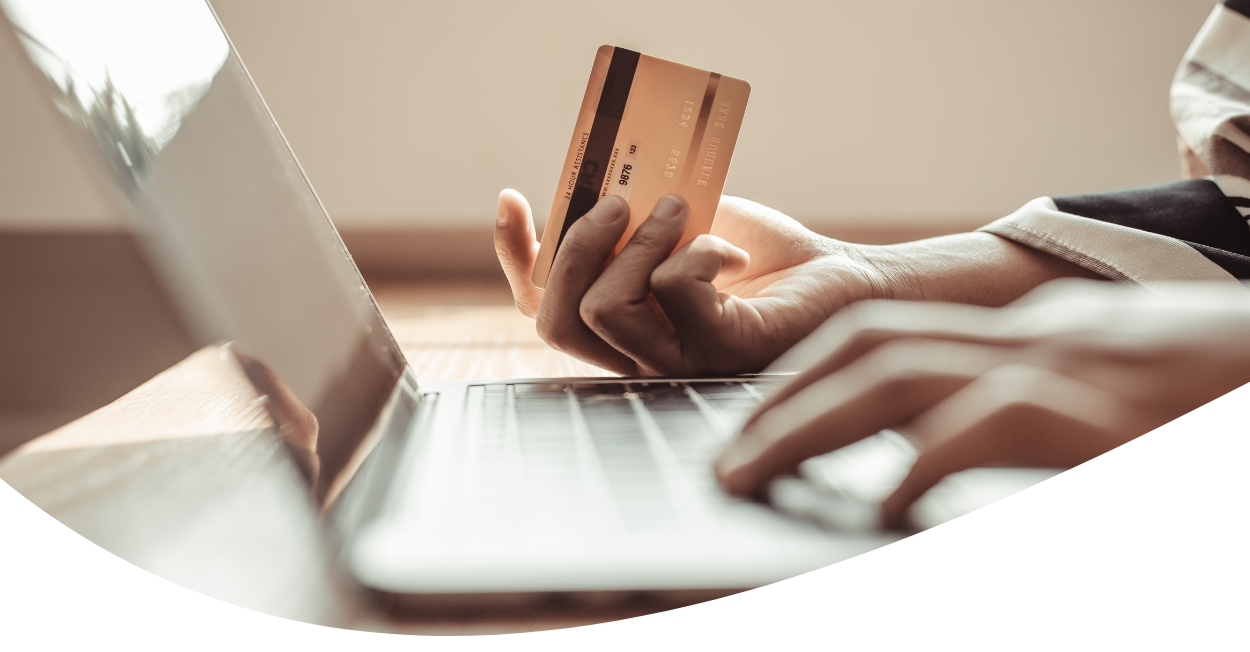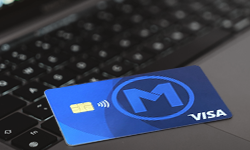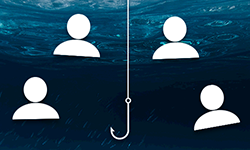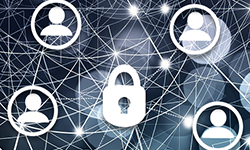
A 2021 study from the Federal Trade Commission (FTC), showed nearly 390,000 reports of credit card fraud, making it one of the most common types of fraud in the United States. Credit card fraud is a problem, but there are steps you can take to prevent becoming a victim. We're sharing types of credit card fraud, how you can recognize fraud and prevent fraud, and what you should do if you suspect credit card fraud.
Types of Credit Card Fraud
Credit card fraud can occur in several ways. Below are some of the most common types of credit card fraud.
Card-Not-Present Fraud
Card-not-present fraud occurs when someone carries out an unauthorized transaction online, by mail order, or over the phone with your credit card information, but not your actual credit card.
Skimming
Skimming takes place when thieves illegally install devices on ATMs, gas pumps, or point-of-sale terminals to steal information like your card number and PIN. They use the stolen information to create a copy of your payment card (also called cloning), charge items to your card, or sell the information to others to do the same.
Phishing
Phishing emails, texts, or messages enables fraudsters to gain access to your personal information. Once these crooks have gained access to your payment card, bank accounts, or email accounts, they can use the information however these please, including selling your information to other criminals.
Identity Theft and Application Fraud
Identity theft occurs when someone uses your personal information to commit fraud or other crimes. Thieves will often steal mail, dig through trash, using phishing tactics, or skim your payment card to gather personal information like your Social Security number (SSN), home address, and date of birth so that they can apply for credit accounts in your name.
Account Takeover
Account takeovers happen when a cybercriminal takes ownership of your account using stolen information like your username or password. The scammer may contact your card issuer and pretend to be you and change your PINs, passwords, or other accounts details, and they may also order a new card to be sent to their address.
Lost or Stolen Cards
Losing your credit card or having it stolen from you can result in someone else using your card to make unauthorized transactions. If your card is lost or stolen, you should contact the card issuer as soon as possible.
How to Recognize Credit Card Fraud
Credit card fraud can leave you financially and emotionally vulnerable. It's important to always keep a close eye on your finances. Look out for these common warning signs that your credit account may be compromised:
- You have charges on your account activity or monthly statements that you don't recognize
- You're blocked from accessing your account
- Your card is rejected when you try to use it
- There are changes to your credit report that you did not authorize
- You receive calls from creditors or collection agencies
- You have a lower available credit balance on your account
How to Prevent Credit Card Fraud
Safeguard against credit card fraud by remaining cautious and implementing these simple but effective practices:
Reduce the chances your card or account number is stolen by protecting your physical card.
- Carry only the payment cards you use and keep them with you at all times
- Store cards you no longer use in a locked safe
- Shred financial statements and expired cards before you throw them out
- Never share your account number over the phone unless you made the call and know you're dealing with a trustworthy business
- Never leave your statements, account information, or PIN numbers out in plain sight
- Never write down your account information and PIN numbers and store them in your wallet or easy-to-access locations
- Limit who you allow to use your payment card (while it may be convenient to give your teenager your card for a quick grocery trip, it increases the chances of your credit card being misplaced, stolen, or skimmed)
Use cybersecurity these best practices to help protect your personal and financial information.
- Secure your home network and avoid using public WiFi
- Enable multi-factor authentication or your computer, phone, and other devices
- Verify websites are secure before making online transactions (the URL will start with "https" and a locked padlock icon will appear in the window of your browser)
- Do research and check reviews before you make purchases from online retailers or individual sellers
- Don't save your card details or account information on your browser or on a retailer's website
- Create strong passwords for all your online accounts and devices and change your passwords frequently
- Beware of phishing, vishing, or other scam tactics to protect your personal and financial information as well as your devices
Monitor your accounts.
- Log in your accounts regularly so you can watch out for mistakes or fraudulent activity
- Keep a close eye out for charges of less than a dollar or two — thieves will often charge a small first to "test out" using your card
- Set up alerts like transaction amount notifications to monitor spending and protect against fraud
- Make it a habit to carefully comb through your monthly credit card statement to verify all transactions and ensure you were charged the correct amount for each of them
- Check your credit report to see a breakdown of your current a past debts and payment history of your credit card and other accounts
- You are entitled to a free credit report every year from each of the three major credit bureaus
What You Should if You Suspect Credit Card Fraud
If you suspect you're a victim of credit card fraud, act quickly to minimize damage and get your financial affairs back in order.
- Alert your credit card company or financial institution and explain the situation. The toll-free number for a lost or stolen card is typically printed on the back of your payment card. You can also find it on your credit card company or financial institution's official website.
- Notify the credit bureaus. Place a fraud alert on your credit record with one of the three major credit bureaus — Equifax, Experian, or TransUnion (Once you have placed a fraud alert on your credit report with one of the main bureaus, that bureau will send a request to the other two bureaus to do the same). Placing a fraud alert on your credit file instructs lenders to contact you and verify your identity before they extend new credit in your name. Another thing you might want to consider is placing a credit freeze on your credit file. When your credit report is frozen, lenders are unable to extend credit because they can't review your credit history. Having a credit freeze in place makes it more difficult for identity thieves to open new accounts or make purchases in your name. To freeze your credit report, you must contact the three major bureaus individually. Once a credit freeze is activated, your credit file is frozen until you lift it.
- File a report with the FTC. Since credit card fraud is a form of identity theft, you'll want to file a complaint with the Federal Trade Commission or FTC. The information you provide is used to create your Identity Theft Report and recovery plan which proves to businesses that someone stole your identity, guaranteeing you certain rights. At the very least, you should report fraud to the FTC by filling out a quick report online which can be used to investigate cases against fraud, scams, and bad business practices.
RESOURCES
« Return to "Blog"







